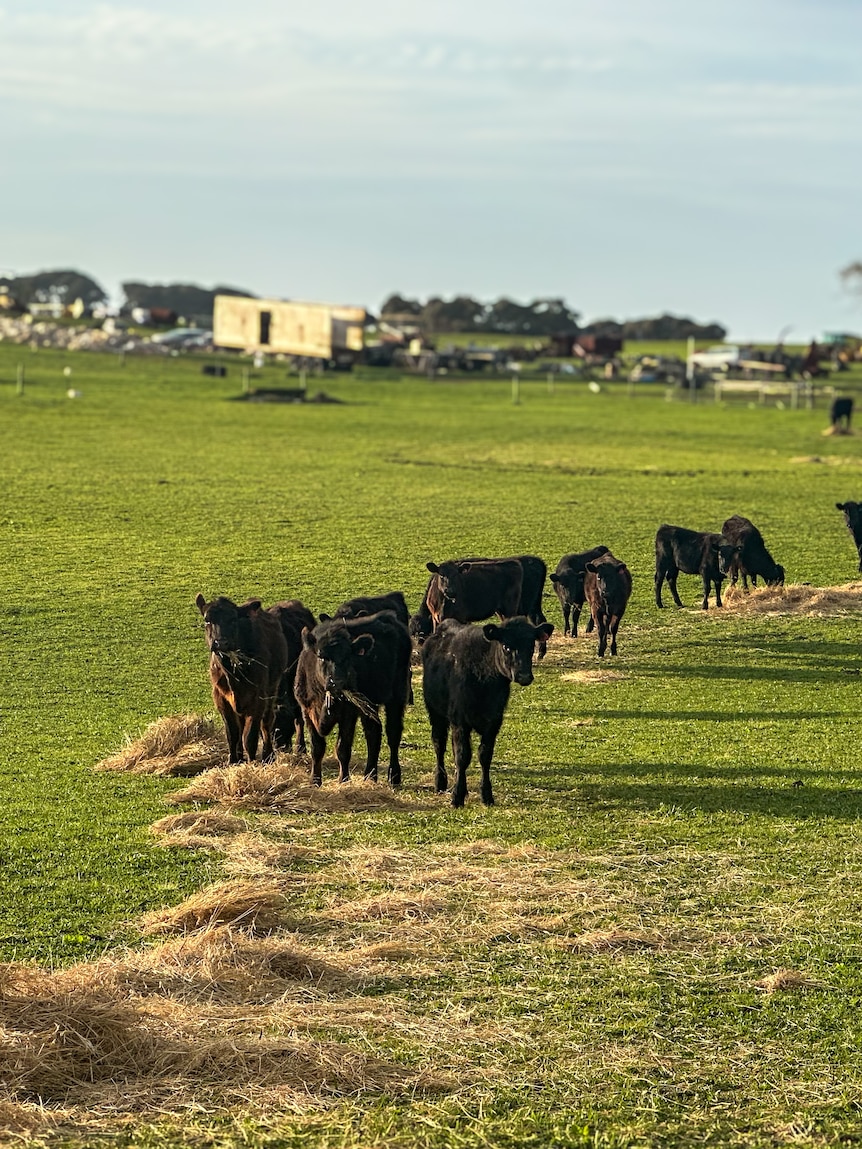Almost any farmer in South Australia will tell you it has been a tough winter.
While the state’s South East is usually known for its reliable rainfall and good farming land, producers say they are struggling to grow enough feed for their livestock.
Cattle farmer Brian Munro, based at Compton near Mount Gambier, said it was the worst season he had seen in decades.
“I’ve been a part of the property for nearly 50 years, and I’ve never seen it like it,” he said.
Farmers are facing a green drought due to low rainfall this year. (ABC South East SA: Sam Bradbrook)
The region has been subject to a “green drought”, with historically low rainfall for the season causing little animal feed to grow.
“People I know from in town were bewildered as to Mount Gambier having a green drought,” Mr Munro said.
“[I ask them] ‘when was the last time you mowed the lawn in the past six months?’ And they think ‘wow, we haven’t done that’.”
Across town, Mil-Lel dairy farmers Nathan and Amelia Collins are also coming off a tough year.
“It probably started last winter when it was an awfully wet winter … followed by poor spring and a long dry summer into autumn,” Mr Collins said.
“It’s just been a battle for feed.”
Brian Munro has been looking for additional contracting work to make ends meet on the farm. (ABC South East SA: Elsie Adamo)
Input costs grow, as prices shrink
Most years many farmers in the region grow enough feed for their stock, with some like Mr Munro able to sell off the excess.
But the increased demand this year has meant increased prices for hay from across the state and over the border.
Mr Munro said he spent a significant amount to buy and ship hay from Rainbow, Victoria, but would have to look even further afield for more.
“I haven’t been able to source fodder within a 500-kilometre radius,” he said.
The Collins family received a truckload of feed, some of which will be distributed to smaller farmers. (ABC South East SA)
Mr Collins said prices had increased since last spring to up to $500 per tonne, compared to about $180 normally.
“There’d be some years we wouldn’t buy any hay,” he said.
“It’s put a hole in things, because the milk price also got cut. It’s put a fair bit of pressure on things.”
Farmers needing fodder have had to look as far as NSW. (ABC South East SA: Elsie Adamo)
Relief for some farmers
In response to the pressures, the region has had its first-ever delivery from Need For Feed Australia, which provides farmers in need with free livestock feed.
Both the Collins and Mr Munro were among many producers who requested a hay delivery.
It is a complete reverse of Mr Munro’s usual situation, having helped out the charity in the past by delivering hay.
“It comes back to recognising that you do need help and actually asking,” he said.
Graham Cockerell helps deliver feed to farmers in need. (ABC North Coast: Adriane Reardon)
Need for Feed chairman Graham Cockerell delivered hay to the Collins’ property over the weekend, with some to be distributed out to more than a dozen smaller farmers.
He said dry conditions had also impacted other parts of south-eastern Australia previously thought “drought proof”, including south-western Victoria and northern Tasmania.
More than 20 trucks, loaded up with about 1,000 bales, delivered hay for about 70 recipients.
But the amount of demand meant a few farmers missed out.
“We’ve got requests further west and further north of here … and it looks like if it doesn’t rain we’ll probably have to go back there,” Mr Cockerell said.
The truckload of feed delivered to the Collins’ property. (ABC South East SA: Josh Brine)
Mr Munro said he was trying to stay positive, as he looked at his back-up plans.
“There has been a few sleepless nights working on plans D, E and F,” he said.
“It’s good to actually get together with other people and kick around a few ideas and do something that you’ve never come across before.”




